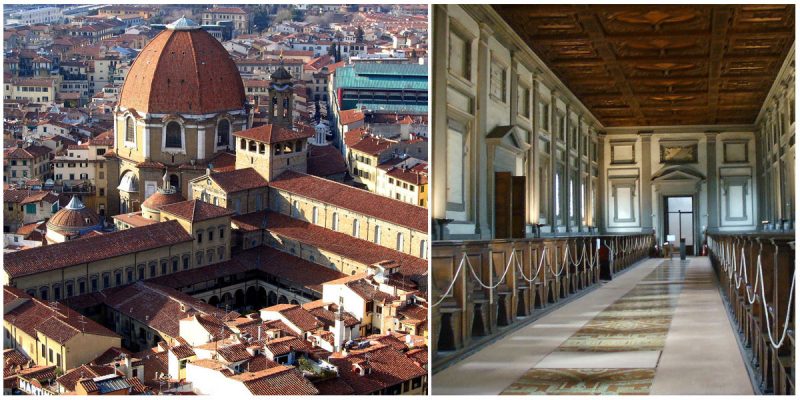The Laurentian Library (Biblioteca Medicea LAurenziana) was named in honor of Lorenzo de’ Medici who was known as the great collector of texts and expanded the library at the end of the 15th century.
It is a historical library in Florence which contains more than 11, 000 manuscripts and 4, 500 early printed books. The library stands on the top level of the convent and it includes two connected parts, the magnificent staircase with a two-story vestibule and a long reading room which houses the books on the upper story.
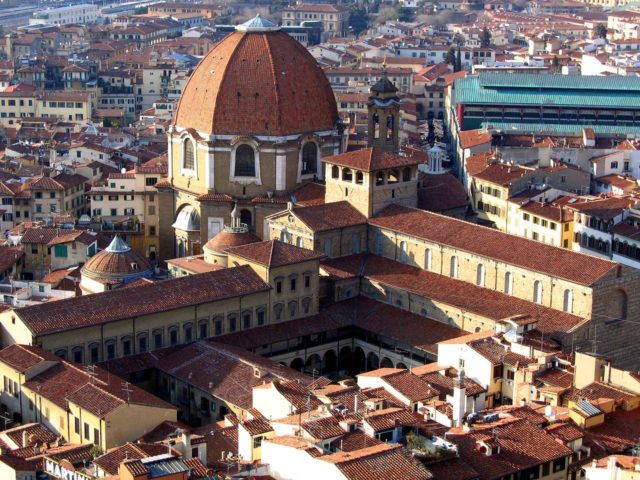
It is a remarkable example of Mannerism and it was planned and built by Michelangelo. The library is one of the most important Michelangelo’s achievements in architecture. He concerned himself with the construction of this library for ten years. In that period, he made preparatory drawings and perfectly designed the look of the library.
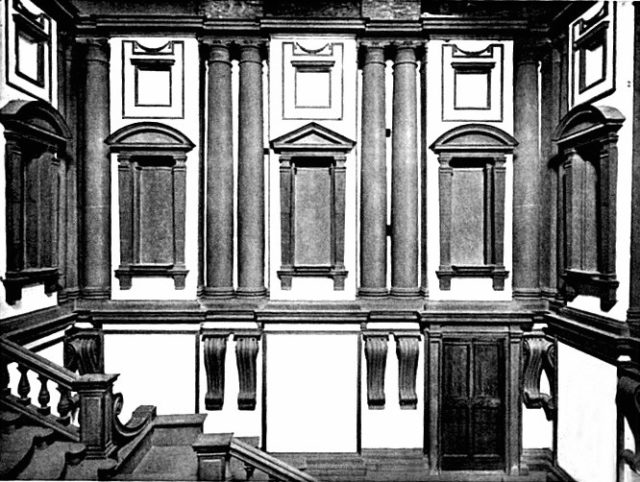
It is said that the way Michelangelo used the space for the library was revolutionary. The construction of the library was continued by his followers Bartolommeo Ammannati and Giorgio Vasari who also worked with their master on the New Sacristy.
According to Wikipedia, the vestibule (called the “ricetto”) on the right side of the staircase was built above existing monastic quarters with an entrance from the upper level of the cloisters. The staircase is an explosion of originality which leads up to the reading room. It consists of three different shapes of steps: the bottom steps are completely elliptical, the central ones convex and vary in width, and the outer ones are straight and quadrangular shaped.
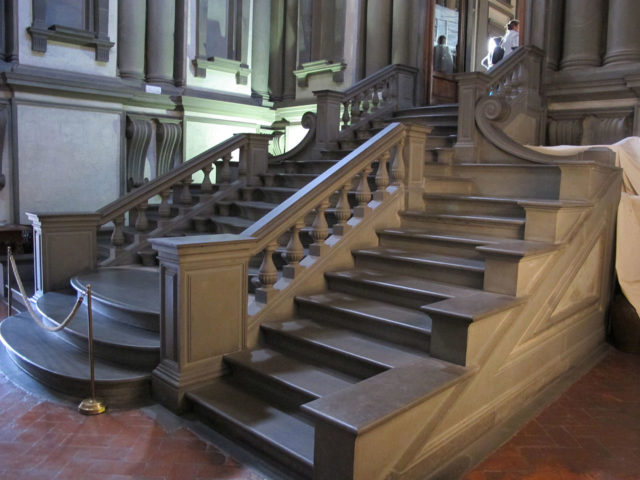
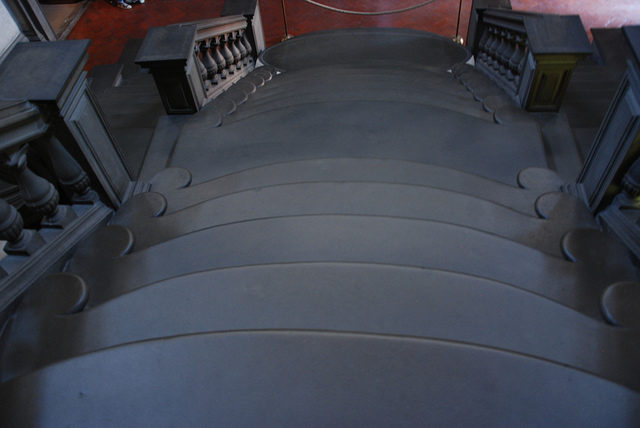
Built upon an existing story, the reading room is 46. 20 m long, 10.50 m wide, and 8.4 m high. The architectural system of this room is totally independent, it does not relate to the vestibule and has a much more calming atmosphere. It has a traditional layout with wooden desks and regular windows.
There is a series of 15 rectangular red and white terra-cotta floor panels beneath the current floor of the Reading Room. It is believed that these tiles were arranged that way to be visible under the original furniture. But, this beautifully designed walnut furniture was later changed because more reading desks were needed in the room.
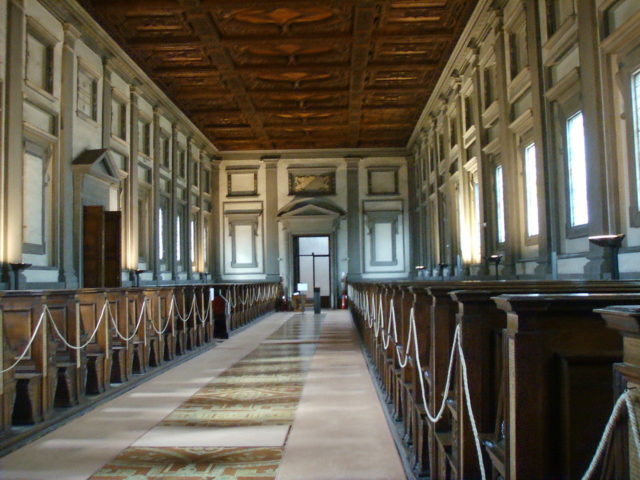
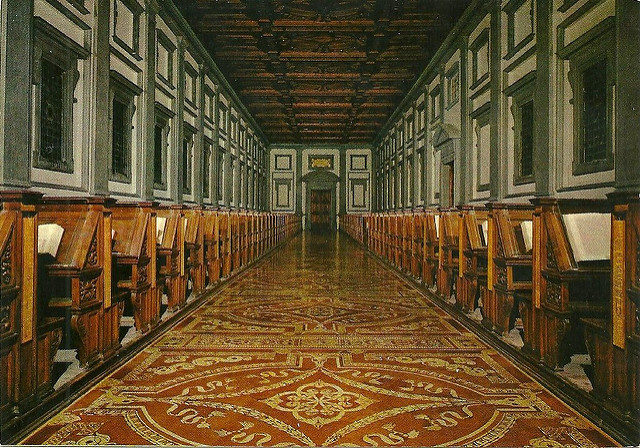
One of the most important manuscript at the library is the Nahuatl Florentine Codex, the book which is a major source of the life of pre-Conquest Aztec.
Other important manuscripts are the Rabula Gospela, the Codex Amiatinus, the Squarcialupi Codex and the Erinna papyrus. There are approximately 100 codices of Dante, and a copy of Decameron from Giovanni Boccaccio’s own manuscript.
